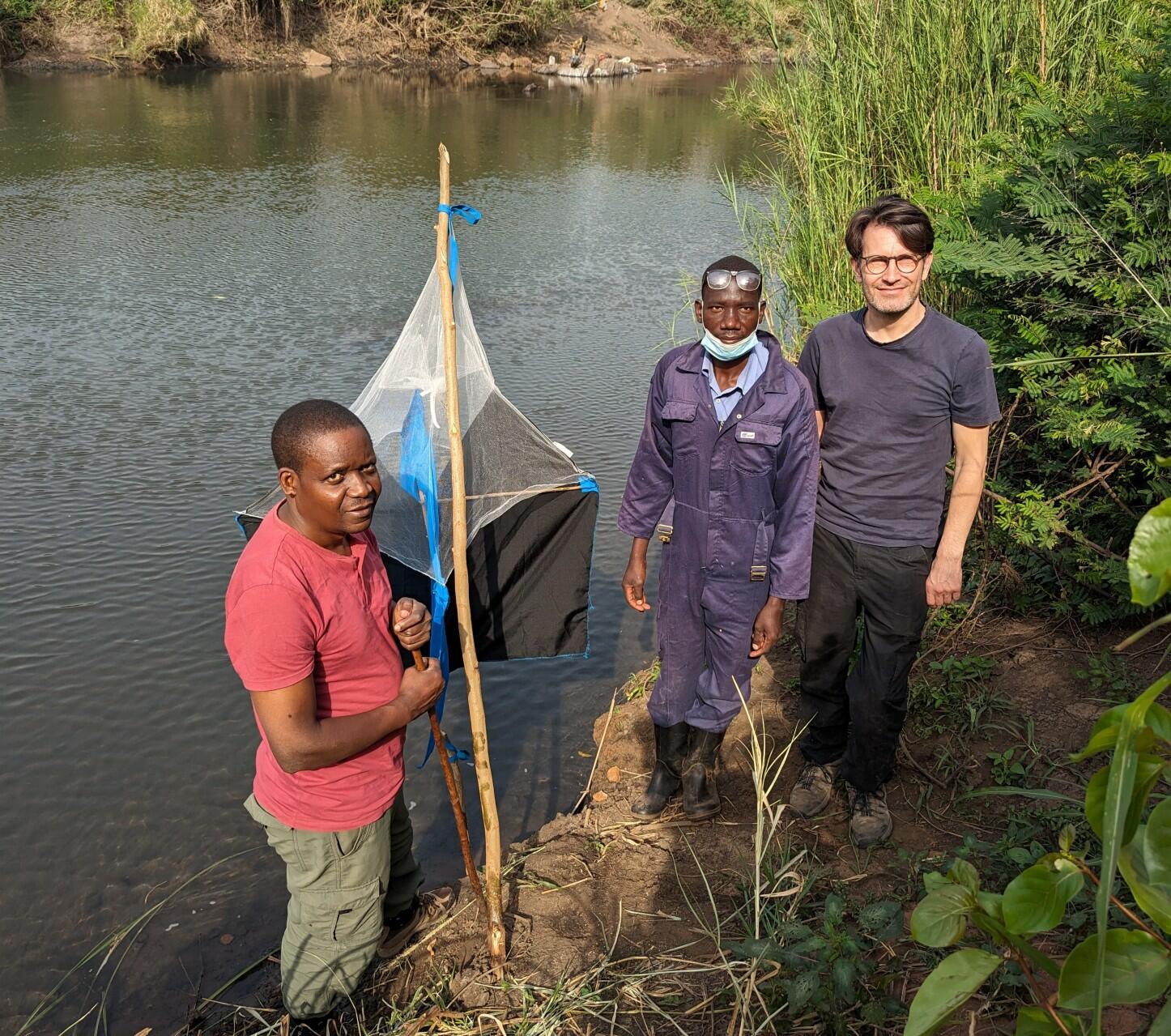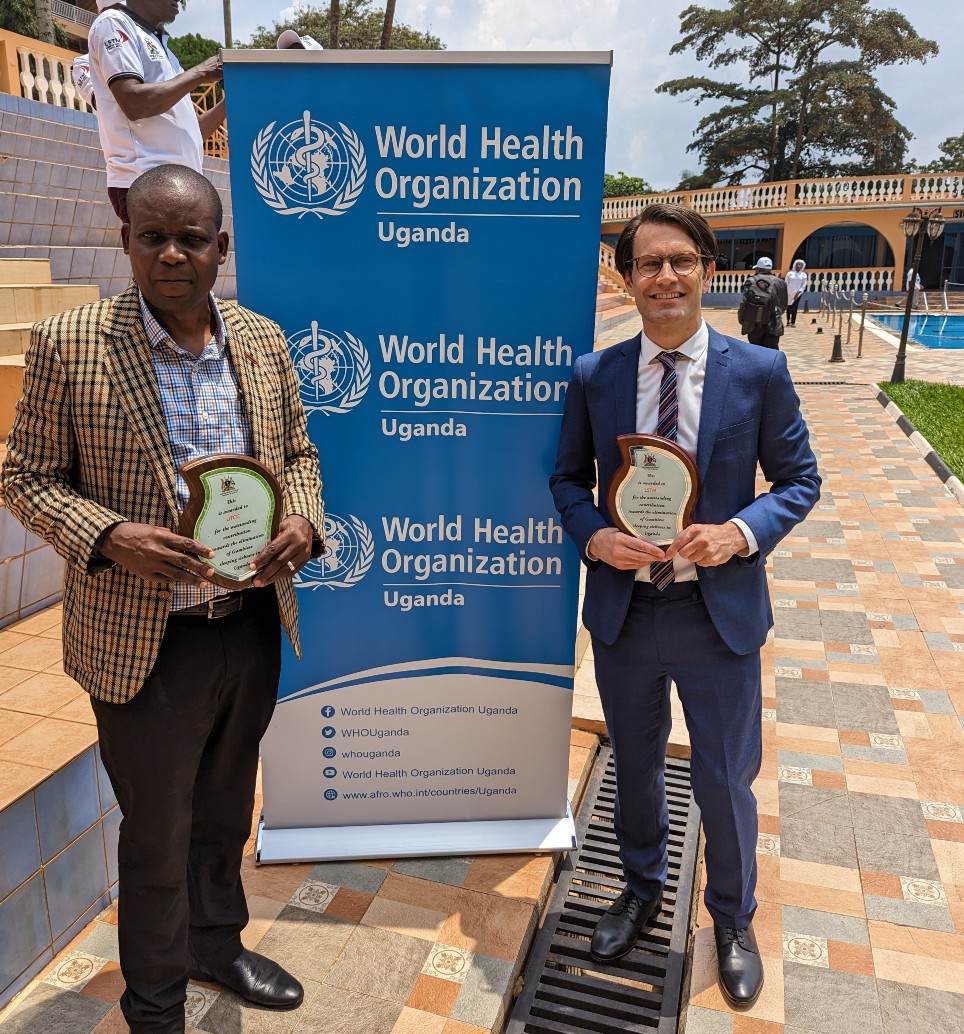
The theme of Neglected Tropical Disease Day 2024 is unite, act, eliminate. In this spirit, scientists who have worked in partnership for the last decade on the transformative LSTM-led Tiny Targets project reflect on its successes in helping to eliminate Gambian Human African trypanosomiasis (g-HAT) in northern Uganda, a neglected tropical disease commonly known as 'sleeping sickness'. The research demonstrates the vital need to continue investing in research and interventions to help control, eliminate, and eradicate NTDs.
During the last major epidemic in the 1990s, the World Health Organization estimated that half a million people died each year of g-HAT. Uganda reported over 1000 cases a year in the 1990s, but there have been no cases since 2020. The decline in cases of g-HAT is a consequence of mass-screening and treatment of cases and vector control. Detection and screening of cases applied alone reduced the incidence of g-HAT to 101 cases/year by 2010, but in the last decade, the addition of vector control has contributed to driving the numbers down to zero.
Historically, vector control was not cost-effective and only became feasible when Tiny Targets were developed by an international team of researchers from Africa and Europe, including scientists from Liverpool School of Tropical Medicine (LSTM). The targets are small insecticide-impregnated panels of blue cloth and black netting, which attract and kill tsetse, reducing their abundance by 80%.
Dr Andrew Hope from LSTM and Dr Albert Mugenyi from the Co-ordinating Office for Control of Trypanosomiasis in Uganda (COCTU) started working together on the large-scale deployment of Tiny Targets across 2500km2 of Uganda ten years ago.
Remembering his first impressions on arriving in north-west Uganda in 2014, Dr Hope said: "When I first arrived in Arua, having seen the countryside as we came into land, it seemed impossible that we would be able to deploy targets over thousands of kilometres. I had been involved with large-scale distribution of bednets in South Sudan, and the logistical challenges in that operation were massive – it was a nightmare."
In contrast to his fears, Dr Hope said: "The large-scale deployment went surprisingly smoothly thanks to the amazing LSTM-COCTU team of Steve Torr, Mike Lehane, Johan Esterhuizen, Inaki Tirados, Clement Mangwiro, Vanja Kovacic, Richard Selby, Harriet Batreru, James Aroba, Fred Luyimbazi and Albert, who had ironed out many of the logistical problems associated with deploying targets during the initial trials. The team not only brought these robust systems but also their experience, which allowed us to scale up operations rapidly."
The targets are deployed along river banks where tsetse concentrate. These riverine areas are also where people visit to collect water, wash, or farm in nearby fields, bringing them into contact with infected tsetse.
Remembering the period before Tiny Targets were available, Dr Mugenyi said: "We used to have a range of interventions: ground spraying, traps, large targets which were the size of a blanket. These were unaffordable or not practicable in northern Uganda. People avoided rivers if they could because of the risk of sleeping sickness and the pain of being bitten by tsetse." This changed once Tiny Targets became available.
By 2015, the operational area had expanded to 2500km2 and continued to grow, reaching 5000 km2 across seven districts by 2017, with about 40,000 targets being deployed annually. One of the keys to Tiny Targets' success was that local people could be quickly trained in assembly and deployment and within a day or so, they would be working with the District Entomologists deploying targets.
The small size of the targets meant that communities welcomed them. People noticed that the targets reduced bites from tsetse, and they even moved the targets closer to their homes. "This isn't what we wanted", added Dr Mugenyi, "but it showed how well people appreciated the targets and the teams deploying them. We explained why we placed the targets along the riverbanks and in areas where the risk of sleeping sickness was high."
The positive effects in north-west Uganda are now clear to see. "We can see people are now farming close to the rivers and are no longer troubled by risk of disease; while tsetse have not been eradicated, the biting nuisance is much less," said Dr Mugenyi.
In 2022, researchers and entomologists from the north-west districts were invited to a meeting in Kampala where the Minister of Health formally announced the elimination of g-HAT as a public health problem in Uganda. In recognition of their achievements, the minister presented the team with certificates.

Dr Hope said that this has been the highlight of his career. "I was aware of the ambitious WHO goals, and when I joined LSTM, I was excited that we were working towards eliminating a disease, something I never thought I would be part of when I first started my career in vector control. Being part of this joint effort, with my LSTM colleagues, with Albert and the team from COCTU, and, of course, with the District Entomologists, achieving elimination in Uganda was a fantastic moment."
Dr Mugenyi added: "The Tiny Targets programme has shown that by working together, as scientists and with local communities, we can successfully eliminate diseases and save lives. By bringing this new tool to Uganda, we have been able to take action to quickly tackle the tsetse problem, which has helped to achieve what many thought was impossible. Hopefully this project serves as an inspiration to other countries that are battling g-HAT and also to other scientists and communities working on other diseases, elimination is possible."
In late 2023, LSTM was awarded a Queens Anniversary Prize for their work on Tiny Targets. Next month, Dr Hope and Dr Mugenyi, along with other members of the Tiny Targets team from LSTM and partners, will go to Buckingham Palace to receive the award.
Over recent years, Tiny Targets used in combination with screening and treatment of cases have contributed to eliminating g-HAT as a public health problem in Côte d'Ivoire and Uganda. The use of Tiny Targets has also led to a reduction in cases in Guinea, the Democratic Republic of Congo and Chad.
Today, Uganda remains vigilant and ready to react should any case be detected. Dr Hope and Dr Mugenyi are in north-west Uganda this week supporting District Entomologists to monitor tsetse populations as part of that ongoing vigilance.